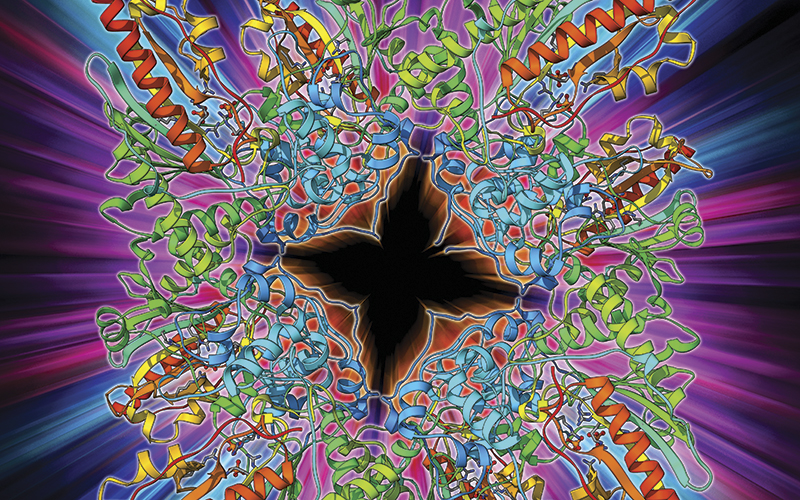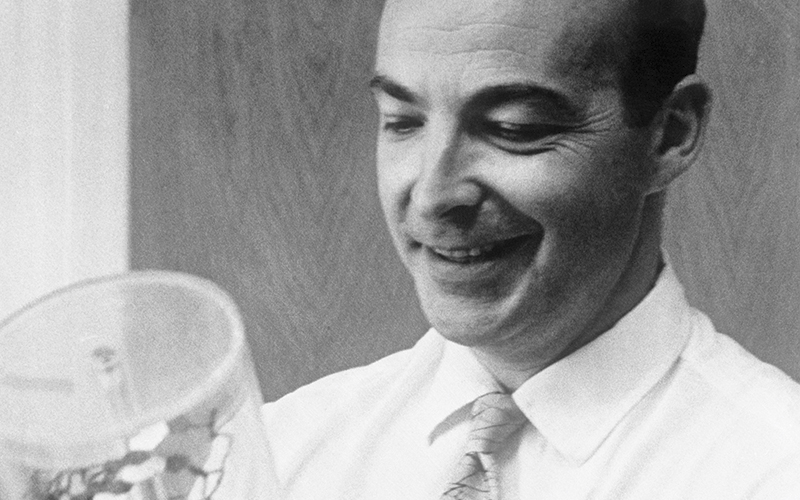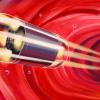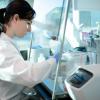In the second instalment of his three-part look at cardiac markers, Stephen Clarke continues his historic analysis of landmark moments in clinical chemistry.

This short review selects landmark papers with background notes, paying tribute to those early pioneers who developed assays for the analysis of blood serum cardiac markers, for the diagnosis and investigation of cardiovascular disease, notably coronary heart disease, which may lead to life threatening acute myocardial infarction (AMI). A previous article (1), published in the November issue of The Biomedical Scientist, described two early cardiac markers – aspartate transminase and lactate dehydrogenase. Here, a more recent biomarker serum creatine kinase and its clinical use are reviewed.
Creatine kinase (CK)
Muscle physiology research studies performed in 1927 by British biochemist Philip Eggleton and his wife Grace, identified potential high energy phosphate compounds, notably phosphocreatine in skeletal muscle extracts. Two years later, adenosine triphosphate (ATP), the key source of energy for life, was discovered by the German chemist Karl Lohmann who later proposed that CK was associated with ATP, and Lehmann in 1936 described the reversible reaction which allows storage or release of energy as required (2). Consequently, CK is most abundant in tissues with high-energy requirements and so is found mainly in brain, cardiac, skeletal and smooth muscle.
The properties of sheep skeletal CK were studied by Australian biochemists Ennor and Rosenberg in 1953, who found that thiol groups (cysteine) and Ca++ and Mg++ were activators for CK (3). CK activity was measured using a colorimetric method for creatine by Hughes (1962), whilst Kudy (1954) measured the liberation of phosphate after hydrolysis using the formation of phosphomolybdenum blue.
Assays for total serum CK
An early spectrophotometric method was developed by IT Oliver at Sheffield University in 1955 based on the procedure devised by the noted US biochemist laureate Arthur Kornberg (1918-2007). ATP produced was used to form glucose 6 phosphate from glucose catalysed by hexokinase and coupled to the reduction of nicotinamide adenine dinucleotide phosphate (NADP) and monitoring the absorbance change at 340nm (4,5). This was one of many methods which used rabbit muscle homogenates as source material.
Spectrophometric methods based on this principle for serum CK were developed by Tanzer and Gilvarg in 1959 (6) and, most notably, by Sidney Rosalki, then at St Mary’s Hospital, London in 1966, with an improved optimised assay that combined the substrates and coupling enzymes in innovative commercially produced gelatin capsules, which simplified the procedure and reduced time without losing performance quality (7,8,9). This has become a classic technique and, remarkably, current autoanalyser methods are based on this same principle.

Clinical reports
Many of the early reports related only to muscle disorders, some notably by the distinguished Japanese physiologist Setsuro Ebashi (1922-2006) a pioneer in muscle research who in 1959 reported elevated serum CK results in patients with Duchenne muscular dystrophy (10). A year later, Dreyfus and colleagues reported a series of patients with raised serum CK in AMI (11) and this finding was confirmed by many other groups, including Niels Sorenson who in 1963 reported a sensitivity of 98% when CK was measured within 72 hours. He also predicted a poor prognosis if the serum CK was still high after this period (12). However, total serum CK has a low specificity and is raised in many non-cardiac conditions, such as skeletal, liver and kidney and cerebrovascular diseases.
Research was undertaken in this period to study the physical and chemical properties of CK from various tissues and with the introduction of agar gel or cellulose acetate electrophoresis, it became clear that CK was dimeric and consisted of two subunits termed M & B, with MM (skeletal & heart muscle), BB (brain, GI tract) and hybrid MB mainly associated with heart (13). These are cytosolic whilst more recently, during the 1990s, creatine kinases have been identified in the mitochondria and their potential clinical implications recently reviewed (14).
CKMB isoenzyme, CKMB isoforms and CKMB MASS
Electrori Hospital, Pittsburgh, with a simple and rapid technique, CK activity in the column effluents was assayed by the Rosalki CK procedure (8,16). A sensitive radioimmunoassay using antibodies to the B subunit was reported by Robert Roberts et al in 1976 (17). Further studies by Roberts and the Washington University of Missouri team lead by Burton Sobel devised tests in 1984 for the presence of CKMB isoforms, post-synthetic modified forms of CKMB, which, although promising – giving a rapid diagnosis of AMI within two to four hours of the onset of symptoms – was not taken into wide use, possibly due the added complexity of testing “cleaved” to “uncleaved” CKMB as a ratio (18). With the emphasis on immunoassays, a Washington research team, now led by Jack Ledenson, focussed its attention on the use of the “new” monoclonal techniques for CKMB and with commercial support led to the development of the Conan antibody, a sensitive and specific antibody for CKMB first used in 1986. With further refinements, it was paired with an antibody to the B subunit to make a two-site mass immunoassay, which was made commercially available in 1988 by Dade International (19). CKMB mass test cartridges (e.g. Abbott Diagnostics) are now commercially available for point of care testing to provide rapid results, their use has been widely reviewed (20).
Comparison studies
The release time pattern after AMI for CKMB and CKMB mass are similar with a rise at four to six hours, peak 10 to 24 hours, with a return to normal 48 to 72 hours. However, CKMB2 isoform rises earlier at two to four hours and peaks at four to six hours, which can be valuable in providing thrombolytic therapy (21). However, the CKMB isoform assay requires considerable technical skill, specialised equipment and so has a limited workload capacity. CKMB isoform and CKMB assays have been replaced by CKMB mass assays, due to the ease of analysis, enhanced sensitivity with results available within 10 minutes. CKMB mass has been reported to be the preferred marker to identify re-infarction and in the prognosis of unstable angina pectoris (22).
However, all variations of CK, whether CKMB isoform or CKMB mass, have the inherent limitation of non-specificity and that “false” positive results for AMI may be obtained with severe skeletal injury in conditions such as polymyositis and rhabdomyositis and equivocal results may occur with a small infarct combined with skeletal necrosis. False results may also be due the presence of macro CK or mitochondrial CK.
Short comments
Total serum CK, CKMB isoenzyme and CKMB mass assays held the centre ground for at least two decades from the 1960s, as the most commonly used cardiac biomarkers in the diagnosis and treatment of AMI. This was mainly due to the pioneer research work, notably by Sidney Rosalki, David Dawson and later the Washington University School of Medicine Group. But with the limitations described, the quest for a more specific cardiac biomarker was already in progress. These will be described in the third and final article on cardiac markers.
Stephen Clarke is a retired IBMS Fellow. He previously worked in clinical chemistry at Southmead Hospital, Bristol.
REFERENCES
1. Clarke SF. Clinical Chemistry Classics, Biomedical Scientist November 2017, p28-32
2. Teixeira AM, Borges GF. Creatine kinase: structure and function. Brazilian J Biomot. 2012; 6(2): 53-65
3. Ennor AH, Rosenberg H. Some properties of creatine phosphokinase. Biochem J 1953; 57(2): 203-212
4. Kornberg A. Reversible enzymatic synthesis of diphosphopyridine dinucleotide and inorganic pyrophosphate.
J Biol Chem 1950; 182: 779-793
5. Oliver IT. A spectrophotometric method for the determination of creatine phosphokinase and myokinase Biochem J 61(1) 116-122 or 416
6. Tanzer ML, Gilvarg C. Creatine and creatine kinase measurement. J Biol Chem 1959; 234: 3201-3204
7. Rosalki SB A capsule test for creatine phosphokinase, Ann Clin Biochem 1966; 4(1): 23-25
8. Rosalki SB. An improved procedure for creatine phosphokinase. J Lab Clin Med 1967; 69(4): 696-705
9. Szasz G, Gruber W, Bernt E. Creatine kinase in serum. 1: Determination of optimum reaction conditions. Clin Chem 1976; 22(5) : 650-656
10. Ebashi S. J Biochem High creatine phosphokinase activity of sera in progressive muscular dystrophy 1959; 46(1): 103-104
11. Dreyfus JC, Schapira G, Rasnais J et al Serum creatine phosphokinase in the diagnosis of myocardial infarct Rev Fr Etud Clin Biol 1960 5 386-7
12. Sorenson NS. Creatine phosphokinase in the diagnosis of myocardial infarction. Acta Med Scand 1963; 174: 725-734
13. Dawson DM, Eppenberger HM, Kaplan NO. The comparative enzymology of creatine kinases. J Biol Chem 1967; 242(2): 210-217
14. Schlattner U, Tokarska-Schlattner M, Walliman T. Mitochondrial creatine kinase in human health and disease. BBA –Molecular basis of disease 2006; 1762(2): 164-180
15. Roe C, Limbard LE, Wagner GS, Nerenberg ST. Combined isoenzyme analysis in the diagnosis of myocardial injury: application of electrophoretic methods for the detection and quantitation of creatine phosphokinase MB isoenzyme. J Lab Clin Med 1972; 80: 577-590
16. Mercer DW. Separation of tissue and serum creatine kinase isoenzymes by ion exchange chromatography. Clin Chem 1974; 20(1): 36-40
17. Roberts R, Sobel BE, Parker CW. Radioimmunoassay for creatine kinase isoenzymes. Science 1976; 194: 855-857
18. Rosalki SB, Roberts R, Katus HR et al.Cardiac biomarkers for detection of myocardial infarction: perspectives from past to present. Clin Chem 2004; 50(11): 2205-2213
19. Mair J, Artner-Dworzak E, Dienstl A, et al: Early detection of acute myocardial infarction by measurement of mass concentration of creatine kinase-MB. Am J Cardiol 1991; 68:1545-1550
20. Friess U, Stark M. Cardiac markers: a clear cause for point of care testing. Anal Bioanal Chem 2009; 393(5): 1453-1462
21. Puleo PR, Guadagno PA, Roberts R et al. Early diagnosis of acute myocardial infarction based on assay for subforms of Creatine Kinase MB. Circulation 1990; 82(3): 759-764
22. Bakker AJ, Gorgels JP et al. Contribution of creatine kinase MB mass concentration at admission to early diagnosis of acute myocardial infarction. Br Heart J 1994; 72: 112-118




